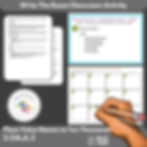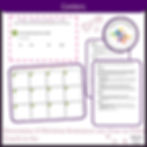Teaching may be one of the most rewarding careers, but it does not always feel like it and can also be incredibly demanding and stressful. As educators, we often prioritize our students' needs over our own, leading to burnout and decreased effectiveness in the classroom. I understand how challenging it can be to balance the myriad responsibilities you face each day. The key to sustainable teaching is self-care. In this post, I will share practical self-care strategies to help you maintain a healthy balance between your professional and personal life, ensuring you remain energized and passionate about teaching. Remember, taking care of yourself is essential—not just for your well-being but also for the success and growth of your students.
What You Will Learn:
Effective strategies to leave work at work
Techniques for decompressing after a long day
Tips for setting and maintaining boundaries
Practical ways to prioritize self-care throughout your day
1. Leave Work at Work: One of the most important self-care tips is to create a clear boundary between work and home life. This means leaving work-related tasks and stressors at school.
Example Scenario 1: After a busy day, Ms. Davis places all her school-related items in her "work zone" at home and does not revisit them until the next day.
Example Scenario 2: Mr. Johnson turns off all work notifications on his phone after he leaves the school building, ensuring he can focus on personal time in the evening.
2. Spend Your Lunch Break Focused on You: Taking time for yourself during lunch can help you recharge for the rest of the day. Avoid using this time to catch up on grading or planning.
Example Scenario 1: Mr. Lee spends his lunch break listening to his favorite podcast and taking a short walk outside.
Example Scenario 2: Ms. Miller enjoys a quiet lunch in her car, listening to calming music and taking a mental break from the classroom environment.
3. Find Healthy Ways to Decompress: Finding a healthy activity to unwind after work is crucial. This could be exercising, reading, or spending time with loved ones.
Example Scenario 1: Ms. Rodriguez goes for a 30-minute jog after school to clear her mind and stay active.
Example Scenario 2: Mr. Green spends an hour gardening in the evening, which helps him relax and disconnect from the day's stress.
4. Set Boundaries for Work Communication: Establishing cut-off times for reading work emails and other communications helps maintain a work-life balance.
Example Scenario 1: Mr. Patel stops checking his work email after 6 PM to ensure he has quality time with his family.
Example Scenario 2: Ms. Thompson sets her email to “Do Not Disturb” mode after 7 PM and resumes checking it only after breakfast the next morning.
5. Prioritize Your To-Do List: It's okay not to finish everything on your to-do list. Focus on the most important tasks and give yourself permission to leave some things for tomorrow.
Example Scenario 1: Ms. Nguyen prioritizes her to-do list each morning, ensuring she tackles the most critical tasks first.
Example Scenario 2: Mr. Carter uses a color-coded system to highlight must-do tasks versus those that can be deferred, helping him manage his workload more effectively.
6. Remember You’re Only Human: Acknowledge your limits and be kind to yourself. No one can do it all, and that's okay.
Example Scenario 1: Mr. Anderson reminds himself that it's okay to ask for help when he feels overwhelmed by his workload.
Example Scenario 2: Ms. Parker gives herself grace by recognizing that making mistakes is part of learning and growth, not a reflection of her worth as a teacher.
7. Set Alarms to Remind You to Go Home: Set an alarm to remind you when it’s time to leave work. This helps prevent you from staying late unnecessarily.
Example Scenario 1: Ms. Brown sets an alarm for 4:30 PM to signal the end of her workday.
Example Scenario 2: Mr. Wilson sets a reminder on his phone to start packing up at 5 PM, ensuring he leaves the school by 5:15 PM.
8. Stretch or Take a Quick Walk: Incorporate short breaks to stretch or walk, which can reduce stress and increase productivity.
Example Scenario 1: Mr. Thompson takes a five-minute stretching break every hour to stay refreshed.
Example Scenario 2: Ms. Kim goes for a quick 10-minute walk around the school during her prep period to clear her head and get some fresh air.
9. Focus on a Good Work/Life Balance: Strive for a balance that allows you to enjoy both your professional and personal life.
Example Scenario 1: Ms. Taylor plans her week to ensure she has time for her hobbies and social activities outside of teaching.
Example Scenario 2: Mr. Martin dedicates his weekends to family activities and personal interests, ensuring he is recharged for the upcoming week.
10. Find Moments to Breathe, Relax, and Reset: Taking brief moments to breathe and reset can make a big difference in your overall well-being.
Example Scenario 1: Mr. Kim practices deep breathing exercises during his prep periods to stay calm and focused.
Example Scenario 2: Ms. Jackson uses a mindfulness app for a 5-minute meditation session during her lunch break, helping her to relax and reset.
By integrating these self-care strategies into your routine, you can create a more sustainable and fulfilling teaching experience. Remember, taking care of yourself is not a luxury—it's a necessity for being the best educator you can be.

































